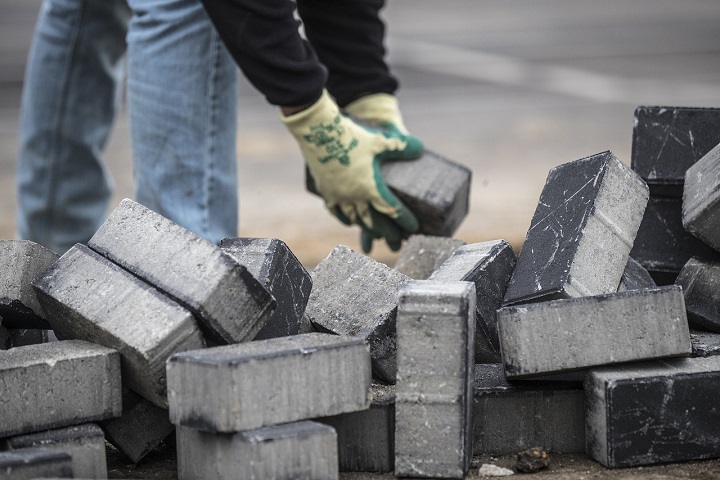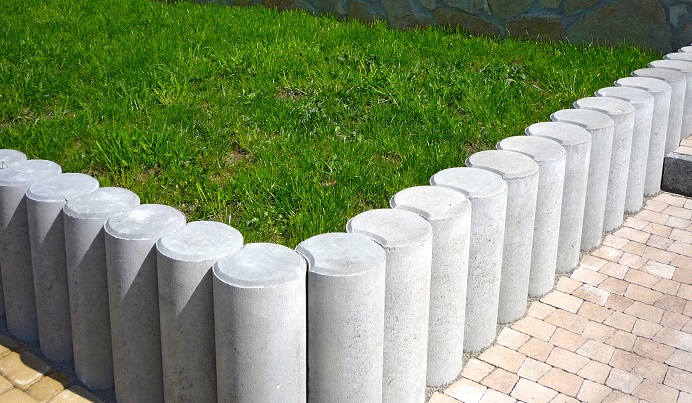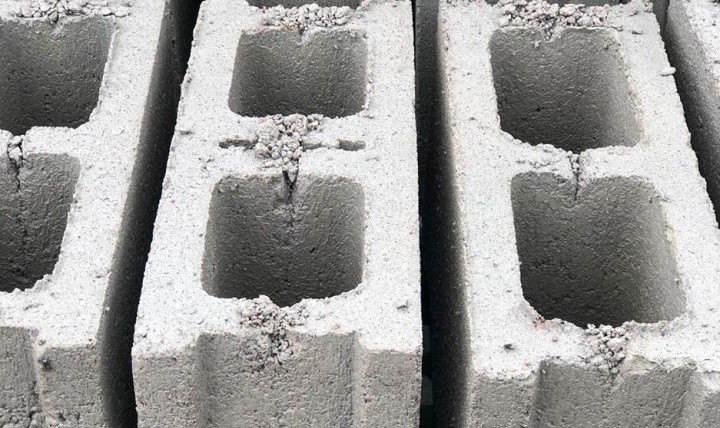Types of Concrete Blocks Preferred in Modern Constructions
Humans have tried to seek shelter for centuries under the most rigid and safe structures. Before humans could make shelters for themselves, God-given structures were their only options. With the progress of time and the advancement of our civilization, we learned how to create structures that can last more than a lifetime. Choice of building materials varied significantly across the globe based on geographical factors, cultural influences, aesthetic appeals, and many other factors. People consider their residence as a place to live and as a symbol of character for themselves.
Concrete blocks have become the primary choice of many property owners throughout the globe as it offers much better characteristics than other available masonry units. Its usage can be dated back to the Romans, Greeks, and even Egyptians. It is believed that the building blocks of the Pyramids are some primitive versions of concrete blocks that we use today. Currently, two of the most popular building materials are red bricks and concrete blocks. The popularity of concrete blocks is soaring worldwide due to their many advantages over traditional red bricks. There are numerous types of concrete blocks available in the market. Each type is used depending on the construction requirement of the project under consideration.
Checklist
What is a Concrete Block?

A concrete block is a building material that is primarily used in the construction of walls. It is also referred to as the Concrete Masonry Unit or CMU. So, a concrete block is a building block entirely made of concrete, bonded together by using mortar to create structures that can last for a lifetime. Concrete blocks are one of the precast building materials, which means these are designed and toughened prior to bringing them to the construction site. Concrete blocks are made in large sizes so that blockwork can be done faster and consume less cement in joints than traditional brickwork. Concrete blocks are used in load-bearing walls, panels, and partitions. Furthermore, modern buildings are heavily dependent on different types of concrete blocks.
How Concrete Blocks are Made?
In 1890, Harmon S. Palmer designed the first hollow concrete block in the US. After many experiments, various more substantial concrete block types and sizes were manufactured. The earlier versions of concrete blocks were cast and made by hand. However, the introduction of high-tech automated machines has changed the concrete block industry, where thousands of concrete blocks can be manufactured each hour. The process of manufacturing concrete blocks can be divided into five steps:
- Raw Materials: Portland cement, water, sand, and gravel are raw materials of concrete blocks. A greater ratio of sand and a lower ratio of gravel and water are used to prepare concrete blocks.
- Manufacturing: The manufacturing process requires an ideal proportion of raw materials mixed in Pan Mixer or Horizontal Mixer machines. The usage of each device depends on construction block types. After the blending process, the necessary amount of water is added to the mixer depending on the climate conditions and water temperature.
- Molding Process: In this stage, the mixed stuff is dumped into an inclined bucket and then moved to the elevator hopper. The mixing cycle starts again until the next load. After taking analytical measurements, the mixture is transferred to interlocking concrete block molds. These molds determine the outer shape of the concrete building blocks. When the molds are full, blocks go through compaction by supplementing air or hydraulic pressure cylinders.
- Curing Process: In this process, the pallets are conveyed to an automated stacker and later to a curing rack. The curing kiln hardens the blocks in high-temperature and high-pressure environments.
- Cubing Process: The final step is cubing, where the kiln is rolled out, and pallets are removed. After completing this process, the cubes or concrete blocks are carried outside with a forklift and placed in storage.
Different Types of Concrete Blocks
Concrete is a highly flexible and versatile material, and engineers and architects have used it to build rugged, long-lasting structures for ages. There are two primary categories of concrete blocks:
- Solid Concrete Blocks
- Hollow Concrete Blocks
Both types of concrete blocks are used to construct walls but can also be used for other purposes. There are many different concrete block types and sizes used for various construction purposes.
Solid Concrete Blocks
Solid concrete blocks look like gray bricks but are denser and more prominent. These blocks are designed to be heavy and robust. Due to its strength, solid concrete blocks are commonly used in load-bearing walls. Solid blocks provide good stability to structures. Solid blocks have more than 75% of their total mass filled with concrete. Solid blocks can be found in garden walls and planters, retaining walls, foundations, steps, pavements, and firepits.

Some categories of solid blocks are:
- Fly Ash Block: Fly ash is a fine and powdery substance that can form Portland cement-like material when mixed with water. Using fly ash blocks in large projects like roads can save a lot of costs. More than 50% of concrete is made using fly ash in the US. Using fly ash blocks can reduce carbon footprint, and these blocks are excellent at resisting cold weather. It can also lessen cracking problems and permeability issues. Fly ash solid blocks are only available in smaller dimensions because they become less durable as they get bigger.
- Aerated Autoclaved Block: Commonly known as AAC blocks, these blocks are lightweight that can provide a higher degree of sound and temperature insulation. AAC blocks can resist fire damage extraordinarily well than other materials. However, it is not as readily available as other concrete blocks. AAC blocks consist of almost 80% air; hence the name is aerated. AAC blocks are not dense like other solid blocks and cannot be used in load-bearing walls. AAC blocks are coated with a protective finish to prevent deterioration due to exposure to different elements. AAC blocks can be made custom sized according to project requirements for use in the sidewall, partition walls, infill panels, and other types of wall construction. AAC blocks are available in different thicknesses as well.
- Paving Block: Paving blocks are rectangular or square shapes, typically painted with bright colors to improve visibility. They are used for paving, on road shoulders, and in walkways.
- Cellular Lightweight Block: These blocks are made of foam, fly ash, and cement. Cellular lightweight blocks are like AAC blocks, excellent in sound and temperature insulation. These blocks are also fire-resistant, environmentally friendly as it uses fly ash, and relatively cheaper than AAC blocks. Cellular lightweight blocks in Bangladesh come in different densities. High-density blocks can be used in load-bearing walls, and medium-density blocks can be used in non-load-bearing walls.
Hollow Concrete Blocks
Hollow concrete blocks contain 50% – 70% solid parts of the total volume. Hollow concrete blocks have holes or cavities, making them lighter than solid blocks. These construction block types come in a variety of sizes and purposes. Hollow blocks are commonly found in residential or commercial buildings, partition walls both in the interior and exterior, boundary walls for architectural purposes, and on the rooftop to protect against heat.

There are many different types of hollow concrete blocks. This type of concrete block is primarily gray in color, even though there are some exceptions.
- Stretcher Block: Stretcher blocks are used to join the corners of masonry units. These blocks are widely used in concrete hollow block application projects. These blocks are laid with their length parallel to the face of the wall.
- Corner Block: As the name suggests, these types of concrete blocks are used at the ends or corners of masonry units. These ends are generally window opening or door openings. Corner blocks are arranged in a manner so that their plane end is visible to the outside, and the other end is locked with the stretcher block.
- Pillar Block: Pillar blocks are used as double corner blocks. These are used in places where two ends of the corners are visible. Furthermore, pillar blocks are very useful in constructing piers or pillars of buildings.
- Jamb Block: Jamb blocks are used in construction when an elaborated window is opening in the wall. Jamb blocks are connected to stretcher blocks and corner blocks. These types of concrete blocks are made with a narrow channel across the two holes and a deeper channel at one end. Its design provides adequate space for the casing members of a window and is especially helpful in double-hung window construction.
- Partition Block: Partition walls are made of partition blocks. Generally, these blocks have two or three cavities and larger heights than their breadth. Partition blocks are similar to concrete pillar blocks except for their larger height.
- Lintel Block: These types of concrete blocks are also known as beam blocks and are used for the provision of beam or lintel beams. These are easily recognizable due to their “U” shape. Lintel beams are necessary on the portion of windows and doors, which act as load bearers. These blocks have deep grooves along the length the block. After the placement of lintel blocks, the groove is filled with reinforcement and concrete to solidify the structure.
- Frogged Brick Blocks: These concrete building blocks have a frog on their top. A frog is a depression in one bearing the face of a molded or pressed concrete brick. This frog helps to reduce the weight of the brick and makes it simpler to detach from the forms.
- Bullnose Block: Bullnose blocks are the same in usage as corner blocks. The only difference is bullnose blocks have rounded edges. Bullnose blocks are preferred in situations where rounded edges at corners are desired.
Summary
There are different types of concrete blocks designed and manufactured for various purposes. Whether you want to build load-bearing masonry walls, partition walls, or even lay down a roadway, concrete blocks can be used effectively in all scenarios. Their usage has increased globally due to their various advantages over traditional red bricks.
To choose the right product, you need to figure out how you will be using it and what properties you want to emphasize. As there are numerous categories of concrete blocks, it is of absolute importance to learn which block to use in a particular situation. Some blocks can be used as load-bearing masonry units, and some cannot. Some are better at insulating sound and heat, and some need more reinforcements than others.
Mir Concrete Blocks have been at the forefront of Bangladesh’s concrete blocks market. The company uses highly advanced technology to manufacture concrete blocks to withstand tremors, reduce construction costs and time, and establish minimal maintenance and good insulation properties. Furthermore, Mir Concrete Blocks cater to the needs of individual customers by offering complete flexibility in design for different types of concrete blocks.
Frequently Asked Questions (FAQs)
What are concrete blocks made of?
Ans: Concrete block is made from Portland Cement, aggregates, and water.
What are the significant types of concrete blocks?
Ans: There are mainly two types of concrete blocks: Solid Concrete Block and Hollow Concrete Block.
Which construction block type is best for residential buildings?
Ans: Different types of concrete blocks in the market serve different purposes. So, each block category is best suited for the purpose it was designed for.
Will it take longer to build houses using concrete blocks?
Ans: No. Rather it will take less time to build houses using concrete blocks.
How long do concrete block homes last?
Ans: Technically it will last for an indefinite amount of time. But it can maintain its highest structural integrity for 100 years.








